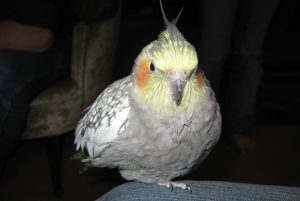The Canary, a bird with a history spanning hundreds of years, remains a highly popular pet today. Do you know how to properly raise and care for this species? Let’s explore the details in the following article with KnowAllAnimals.
Scientific Classification
- Kingdom: Animalia
- Phylum: Chordata
- Class: Aves
- Order: Passeriformes
- Family: Fringillidae
- Genus: Serinus
- Species: S. canaria
- Subspecies: S. c. domestica
1. The Origin of the Canary Bird
The Canary bird, whose scientific name is Serinus canaria domestica, is also commonly called Canary in English. This is a species that humans domesticated from a wild bird, which originated in the Canary Islands. They were first discovered in the 17th century when a group of Spanish sailors conquered the islands surrounding the Canary Islands.
The first Canaries followed those sailors back to the mainland and were sold in pet stores. Because of this, they became well-known and are as popular as they are today. Currently, Canaries are mainly purchased through imports from countries like the U.S., the U.K., Australia, China, and Japan.
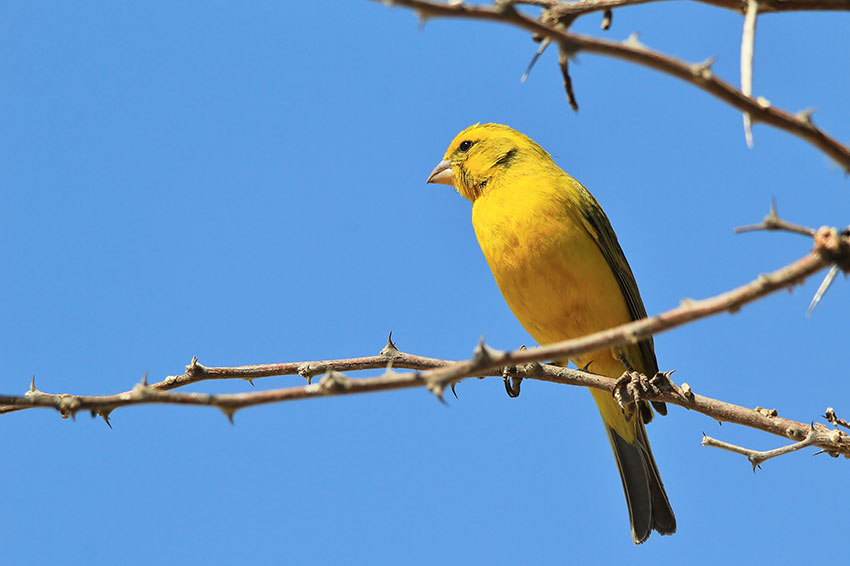
2. Characteristics of the Canary Bird
Let’s explore the characteristics of the Canary, including its physical traits, personality, behavior, and breeding ability.
2.1. Physical Traits
The most popular Canary in the world today has a very vibrant bright yellow coat. However, they also come in other feather colors like white, brown stripes, blue, red, purple, and more, but these colors are not as popular as yellow.
They have a small, agile appearance and a large but short beak. Their jet-black eyes stand out against their bright yellow feathers. In addition, Canaries have a wide wingspan and feet with four toes—three in the front and one in the back—which enhances their ability to climb, grip, and hold their prey. Their tail is a light yellow and quite stiff.
2.2. Temperament
Canaries are considered an intelligent, agile species that can be trained by humans and follow commands easily. However, they are a flock-living bird and can get quite lonely if kept in a cage by themselves. Therefore, they need other birds for company to avoid feeling stressed. However, you should never keep two male birds together in a cage alone, as they will attack each other.
2.3. Lifespan
Canaries have an average lifespan of 5–10 years if they are cared for under optimal conditions. However, in the wild, their lifespan can extend up to 12–15 years.
2.4. Reproduction
The breeding season for Canaries usually starts in January and ends before the summer. When a male and female pair up, they will find a place to build a nest together, mate, and lay eggs. Both the mother and father will incubate the eggs and care for the young after they hatch.
Typically, a Canary can lay 3–4 clutches a year, with 4–5 eggs per clutch. Because of this, they can easily grow into a large community in a short amount of time, even if you only start with two birds. The young birds are quite weak after they hatch; they need to be 30–40 days old before their feathers are fully developed and they can begin to fly. When they reach 9–10 months of age, they can start to breed themselves.
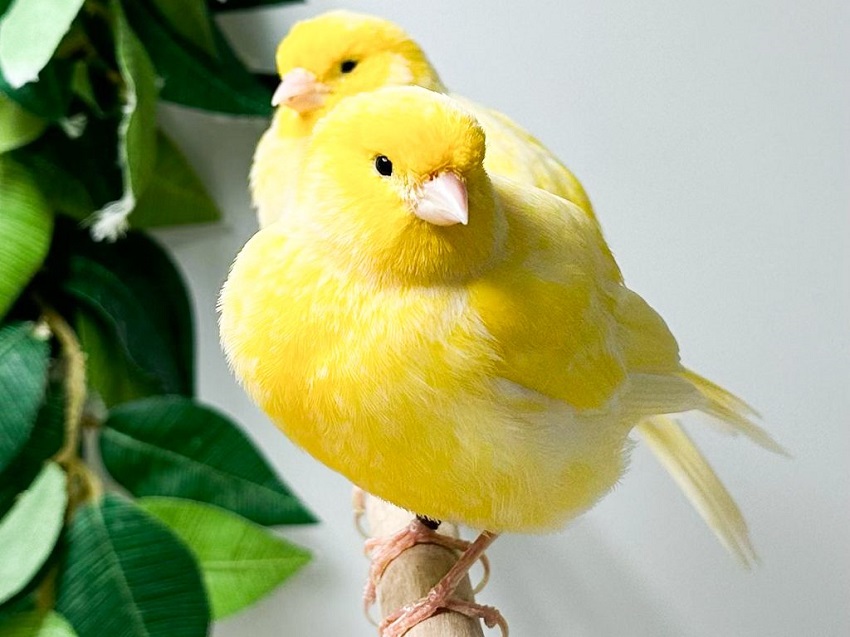
3. How to Identify Male and Female Canaries
For experienced bird owners, telling the difference between male and female canaries is no longer a concern. But for beginners, it’s not a simple matter. Typically, the distinction between male and female is shown through the following factors:
3.1. Young Canaries
When a young canary is a few days old, veins will begin to appear on its belly. If the pattern in front of the anus is a “V” shape, it’s a male, and if it’s not, it’s a female.
Before the young birds grow feathers, if you look from above, the ones with a flat head are male, while the females have a rounder head.
You can also differentiate male and female birds by paying attention to the back of the young birds. The feathers along the back of the male birds are stiffer and darker than those of the females. Remember to record this in your logbook.
When the bird is about 6-7 days old and its eyes start to open, from this time until adulthood, the eyes of the male bird will form a parallelogram with its beak. The female bird’s eyes are located above the beak, which is why her head is rounder than the male’s.
When the young birds are in their nest being fed, pay close attention. The one that reaches up the highest and has the loudest chirps, and is fed first, will be the male. Female birds have shorter legs, so they don’t stand as high, and their heads are also smaller, so they eat less than the males.
When the young birds are 5-8 days old (this is the time to put leg bands on them), take all the young birds from the nest and place them on a piece of cloth in a horizontal line, as if preparing for a horse race. The one that runs the farthest is the male.
3.2. Adult Canaries
When putting a leg band on the bird, pay attention to which bird has a middle toe that is longer than the other two and is more difficult to put a band on—that’s the male. A female canary’s three toes are almost the same length.
When the bird is 28-30 days old, some male birds will start to practice singing. You can see the male bird’s throat vibrating. (A bird starting to sing early doesn’t mean it will be the best singer later; it just means it started practicing earlier).
When the birds are about 5 months old and have finished molting, the male’s feathers will always be brighter and darker than the female’s.
In a flock of birds, you may notice some females even if the birds are about 6 months old. At that time, female canaries often have a slightly bent leg on the perch due to their body structure. Females can also fight with males at this age, because male birds are actively practicing their songs and are not yet in their breeding season.
4. How to Care for Canaries
To ensure your canary develops well and sings beautifully, you need to keep the following in mind:
4.1. The Bird Cage
The cage for a canary doesn’t need to be very large; it just needs to be big enough and clean so the bird doesn’t get sick and can develop well. The cage should have a perch for the bird to sit on, a bowl for food, and a bowl for water.
You should place the cage somewhere high up and well-ventilated, away from direct sunlight.
When you’re choosing a canary to keep as a pet, you should pick a bird that is between 30 and 60 days old. At this age, the bird is just beginning to develop and is very easy to raise and train. The food for a bird this age is also easy to find—you can give them green vegetables and finely crushed seeds.
4.2. Suitable Food
Canaries love various types of seeds, such as millet, sesame seeds, and canola seeds, as well as some fresh fruits and vegetables. You should provide a balanced diet to ensure they get enough minerals and vitamins every day. You can follow this sample menu:
- Fruits and vegetables: Broccoli, bananas, beans, apples, and oranges. Feed them these 3-4 times a week.
- Seeds: Millet, sesame seeds, and canola seeds. Feed them these regularly.
- Mineral blocks and cuttlebone: Place these in the cage for them to eat gradually to supplement their minerals.
- Water: Change their fresh water every two days.
4.3. Disease Prevention
Canaries are very susceptible to mites and parasites. Early treatment is necessary to prevent serious complications that could be fatal. This disease mainly occurs in the summer, especially with birds that live outdoors. So, if your bird is kept indoors and properly cared for, you won’t have to worry about this disease.
In addition, canaries usually molt at least once a year. However, if their feathers don’t grow back after shedding and bald patches appear instead, it means they are sick. You should take them to a vet as soon as possible to find the cause and treat it in time.
4.4. Training a Canary to Sing Beautifully
For a canary to start learning to sing well, they must be at least two years old. Once they are old enough to learn, you can have them listen to prerecorded music or the songs of other good-singing birds so they can practice along. This requires a lot of long-term patience, but gradually your canary will start to sing beautifully and loudly.
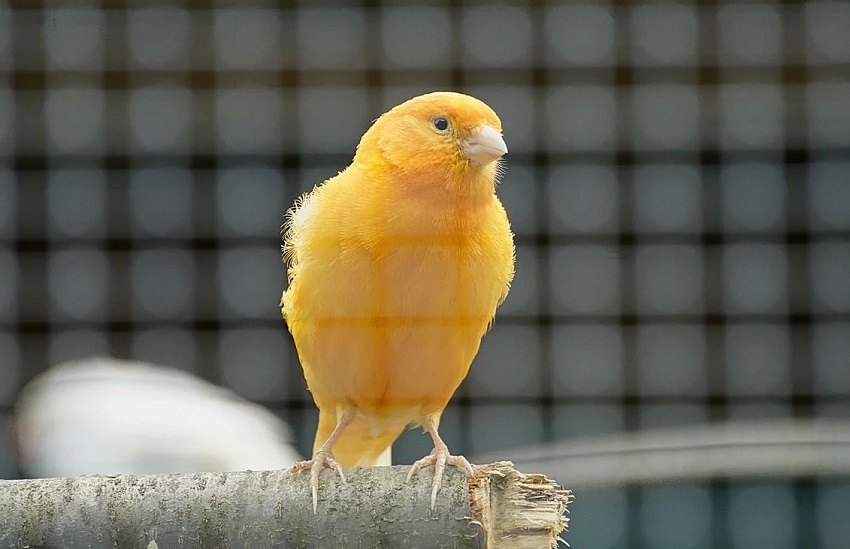
5. How Much Does a Canary Cost?
The price of a canary depends heavily on its age, whether it can sing, the color of its feathers, and more. If a bird meets all the best conditions—a bright yellow coat, a good singing voice, and an age of two years or older—the price will range from $120 to $320 per bird.
For regular canaries that are less likely to sing, the price will be half of that, from just $50 to $80 per bird.
6. Some Interesting Facts About Canaries
6.1. Canaries Originally Came from the Canary Islands
This wild bird species is native to the Canary Islands, a small chain of islands off the coast of West Africa. It was only when Spanish sailors arrived and took them away that they had the opportunity to become popular worldwide.
6.2. Domesticated Canaries Are a Distinct Subspecies
Did you know that the canaries that people keep as pets today are the result of many years of crossbreeding? This process created a distinct subspecies with the bright yellow coat that we see today. Before that, they had a variety of different colors, from white and blue to red and purple.
6.3. The Meaning of the Name “Canary”
Although the Canary bird’s name comes from the Canary Islands, the word “Canary” was inspired by the Latin word “canis,” which means “dog.” Isn’t that interesting?
6.4. Canaries Were Once Sent into Coal Mines
In the early 20th century, when the coal mining industry was still “hot” worldwide, Canaries were brought into coal mines to detect for leaks of the highly toxic carbon monoxide (CO) gas. This is because this species of bird can absorb nearly twice as much air as a human, so they would sense the danger when CO levels rose and try to escape. This would alert the miners to the danger so they could take precautions.
6.5. Canaries Inspired Language Research
In 1950, the incredibly famous animated short film Canary Row was released, inspired by this beautiful bird. The non-verbal gestures and communication in the film helped scientists conduct deeper research into how people communicate with each other, even with language barriers.
6.6. Male Canaries Sing Better Than Females
Male canaries have a more beautiful singing voice than females. This is because, during the breeding season, the males must showcase their singing talent to attract the attention of the females. This is how they form a bond and become a pair. For this reason, many bird enthusiasts often choose to keep male birds instead of females.
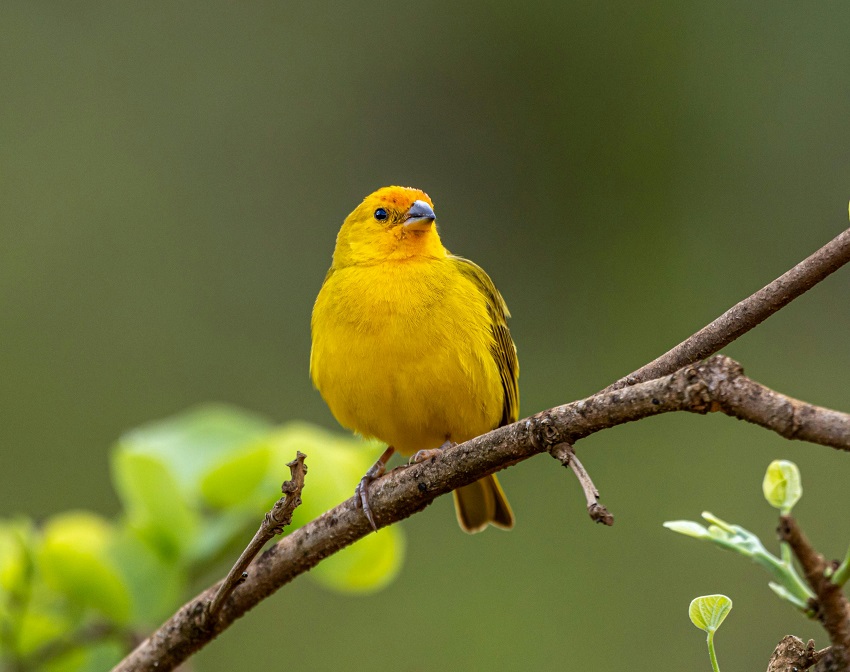
7. FAQs
1. Do all canaries sing?
Only male canaries are known for their strong singing abilities. Females may chirp softly but typically do not sing like males.
2. What do canaries eat?
Canaries eat a diet of high-quality seeds or pellets, supplemented with fresh vegetables, leafy greens, and occasional fruits. Clean water should always be available.
3. Can you keep a single canary?
Yes, unlike many birds, canaries do well when kept alone. In fact, males may sing more when housed individually.
Keeping Canary isn’t just a hobby that brings joy and relaxation; it’s also a mental investment that requires knowledge and careful preparation. Understanding canary prices and the factors that influence them will help enthusiasts easily choose a bird that fits their needs and budget. Always find a reputable source and keep learning from others’ experiences to fully enjoy this vibrant passion for bird-keeping.
References: https://en.wikipedia.org/wiki/Domestic_canary


